Historical Sites of Arunachal Pradesh

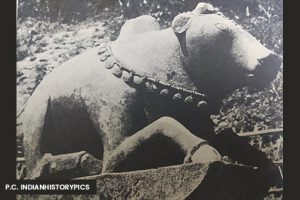
Historical places carry a huge amount of importance as they offer a deeper insight into the cultures and traditions of the world that existed in the past. These are the buildings and monuments that have stood strong and resilient through the test of time and they today serve as an important source of information when it comes to studying history. Arunachal Pradesh is also in possession of many such sites of historical significance that not only unfold priceless tales of the past to the onlookers, but also help in uplifting the tourism sector of the state. Here’s a glance into some of them.
Malinithan Temple
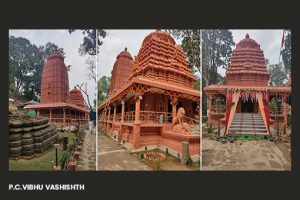
Dating back to the 13th -14th century, Malinithan offers a sneak peek into the world of the Chutia kings that built the temple during their rule. This archaeological site is located in the Likabali town of the Lower Siang district of Arunachal Pradesh. The buildings are made up of granite stones and the sculptures of deities and animals, designs of flowers, damaged columns and panels etc. have been excavated from the place. Five popular sculptures worth mentioning that were found at the site are those of deity Indra riding his majestic white elephant Airavata, Kartikeya on his peacock, Surya on his chariot, lord Ganesha on his mouse and a Nandi bull. But there’s more to the place than its historic essence. Legend has it that when Krishna and Rukmini (first queen consort of Krishna) were travelling to Dwarka, they stopped by at Malinithan and were entertained by Shiva, Durga and Parvati themselves.
Bhismaknagar
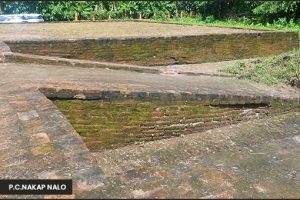
Located near Roing of the Lower Dibang Valley district of Arunachal Pradesh, Bhismaknagar is a popular archaeological site of historical importance. The ruins of Bhismaknagar owe its existence to the Chutias that once ruled over the Sadiya region during the 11th to 16th century CE. According to the sources, it is the oldest recorded archaeological site in the region. Interesting fact about this place is that it has been identified with Sadhayapuri (Svadhayapuri) which was a centre of great political importance during the reign of the Chutias. The fort is considered to be the capital of Chutia King Lakṣmīnārāyaṇa, who ruled during the early 15th century. The city is well fortified with walls measuring 4.5 meters high and 6 meters wide in the east, west and the south directions; while on the northern part, the Mishmi hills safeguards the city acting as a natural barrier. Displaying the cultural aspects of the medieval kingdoms, Bhismaknagar holds possession of great artefacts such as potteries, terracotta figurines, terracotta plaques and decorative tiles etc.
Ita Fort
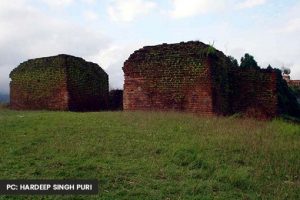
Itanagar, the capital of Arunachal Pradesh derives its name from the historical site of Ita Fort located in the Itanagar town of Papum Pare district. These ruins are also considered to be built by the Chutia rulers. Literally meaning the fort of bricks, Ita Fort has irregular shapes made out of bricks which date back to 14th-15th century and it has three different entrances towards the western, eastern and the southern sides. The Ita Fort was among the Chutia hills of the time; accredited to the then Chutia King Ratnadhwajpal, who built the fort around his kingdom from Biswanath till Disang. Today, the ruins of the fort is known as one of the popular historical sites and counted among the beautiful destinations in Arunachal worth visiting.
The World War II Cemetery
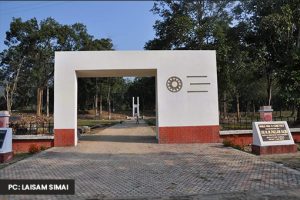
This historical site is located in the Stilwell Road (Ledo Road) in the Jairampur-Nampong road of Changlang district in Arunachal Pradesh. Discovered in 1997, around 1,000 graves were found within an area of about three acres which have been identified to be of the allied soldiers, consisting mostly of Chinese, Kachins, Indians, Britishers and American soldiers who died during the Second World War era. The soldiers are believed to have succumbed to medical ailments like malaria, dysentery etc. Other presumptions include landslides, enemy fires and various other causes. The Jairampur War Cemetery stands as a tribute to the unknown brothers in arms along with workers and labourers who laid down their lives in line of duty during the war period and is frequented by tourists.
Like these, many historical places enriched with valuable information on the cultures and the incidents of the past are thriving in Arunachal Pradesh. But over time, many of these have been nearly demolished and destroyed either by animals, natural occurrences or by the ill acts of miscreants. Considering how important they are to recreate history and study about the traditions and cultures of the past, these heritage sites are to be protected at all costs. While many of them have been renovated by the government of Arunachal Pradesh, it remains a moral responsibility of the tourists and the common masses to uphold and ensure the security of these sites. This is only possible if we all pledge to practice a responsible tourism in the state. Click here to read more on Responsible Tourism.


